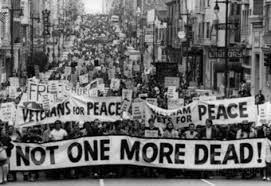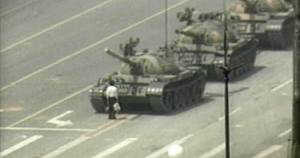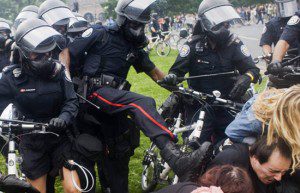
It began rather innocently as a group of students naively wanting change. It was the ninth year of the war in Vietnam. I was in my second year at Ryerson. The U.S. National Guard shootings of four students at Kent State had just happened. On University Avenue in Toronto, we joined others whose agendas were wide-ranging. Some wanted world anarchy. Others were Americans burning their draft notices. Most were like us, just students wanting to change things for the better. Then, things went haywire.
“The police are on horses,” somebody shouted, “and they’re coming at us.”
Suddenly, what we thought would be a peaceful demonstration of our discontent over foreign police in South East Asia, turned into a confrontation with police horseback. We later learned the stampede of people and police resulted in smashed windows up Yonge Street, ink stains on the walls at the U.S. Embassy on University Avenue, and a black eye for the City of Toronto. So it goes in the world of demonstrations when intentions get trampled by the realities of a street protest.

I suspect the same could be said about demonstrations such as Lech Walesa’s Solidarity movement in Soviet-dominated Poland 40 years ago, the anti-Vietnam War protest at Kent State University in May of 1970, the student occupation of Tiananmen Square in Beijing in May of 1989 or this week’s night-long protests over the death of Michael Brown in Ferguson, Missouri. What began as one intention – a shipyard strike, a student peace rally, an assembly of students inside a totalitarian state, or anger over the shooting of a young black man – became something completely different because of on-site conditions, personalities involved, reportage by media and response of the powers that be. Maybe Robert Burns said it best:
“The best laid schemes of mice and men / Gang aft agley,” he wrote in his poem “To a Mouse.”
It’s been nearly 300 years since the Scottish Bard wrote those lines after discovering a mouse nest during the winter. Coincidentally, some of history’s momentous demonstrations-cum-protests began in winter. The so-called “Prague Spring” actually began in January 1968 when Alexander Dubcek became the first elected secretary of the Communist Party of Czechoslovakia. Of course, the loosening of restrictions against free speech, freedom of the press and freedom to travel ended in August that year when Soviet forces invaded the country and killed the reforms. This decade’s “Arab Spring” actually began in December 2010 when popular uprisings in the Middle East eventually forced rulers from power in Tunisia, Libya and twice in Egypt.

Demonstrations, protests and uprisings vary in degree, but are most often characterized by movements of large numbers of people – Walesa’s Solidarity, Dubcek’s citizen support in Prague, the hundreds of thousands in Egypt’s Tahrir Square – and by the response of authorities.
The sour aftermath of the G20 summit protests that turned into riots in Toronto still haven’t faded in the minds of police, politicians or the public. Most agree that while the worst of the violence was initiated by a handful “black bloc” instigators (who covered their bodies in black clothing and their faces with black bandanas), response by law enforcement authorities went way over the top. If we weren’t ourselves eyewitness to the events, many of us have family or friends who will never forgive either the window-smashers or the police for the events of June 26-27, 2010.
Of course, many demonstrators do so in public knowing the media will cover such things for the 6 o’clock news or that social media will make sounds and images go viral. In this fashion, some demonstrators hope to get their so-called “15 minutes of fame.” The problem in such places as Ferguson, however, is that the protesters appear to be friends and family of the victim, and the anti-protesters – the police – appear to be friends (“family”) of the perpetrator. And everybody is armed.
This week, when things flared up at Ferguson, the former police chief of Seattle spoke out about what should have been learned from the World Trade Organization experience in his city 15 years ago. Norm Stamper told CBC Radio that back in 1999 in Seattle his “first and biggest mistake was to allow the use of chemical agents [tear gas] in a non-violent demonstration of protest.” He pointed out that Americans are allowed to demonstrate; it’s a First Amendment right. But confronting a civil protest with a military response, he said, was dead wrong and the mistake has been repeated in Ferguson.
I just remember our peaceful intentions in the streets of Toronto trying to stop the war in Vietnam and what the mounted police response appeared to trigger instead. Author Myrna Kostash interviewed one of the witnesses to that day, May 11, 1970.
“I was standing beside a kid whose head was split open,” her source said. “He was gushing blood… A cop came after me, flailing away. It was positively American.”